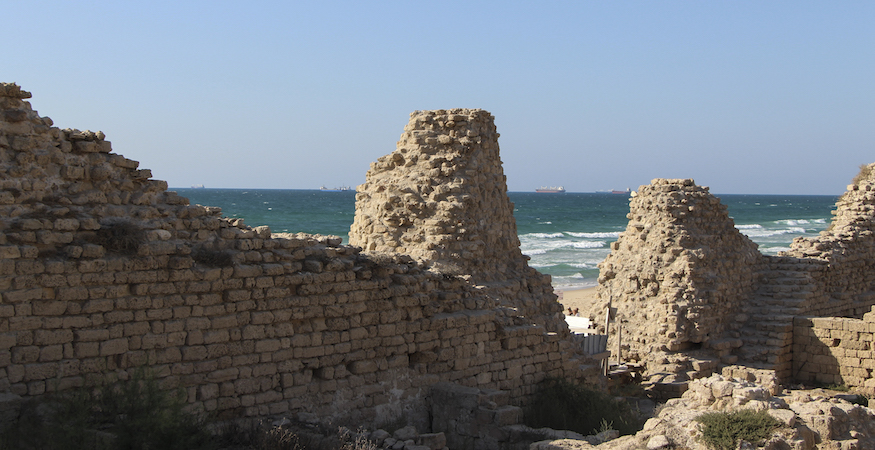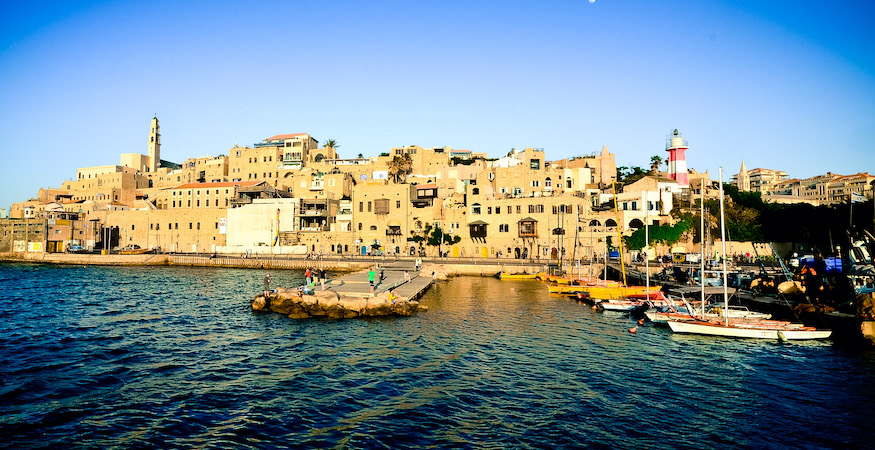Plain of Philistia – Walk through the Land
We continue our ‘Walk through the Land’ series (Genesis 13:17) with our third article. Our goal is to increase understanding and appreciation of the Bible by understanding its geography.
In our previous article, we began to explore the coastal plain. Though it is long, straight, and prominent, Israel’s coastline is not uniform. It can easily be divided into three regions: The Plain of Acre (north), Plain of Sharon (central), and Plain of Philistia (south). We began to learn about the latter plain in our last article.
In this article, we focus on the five Biblical cities in Philistia: Gaza, Ashkelon, Ashdod, Ekron and Gath.
“In Gaza the Israelite judge Samson took the gates of the city in an overnight run and carried them 56 km uphill to Hebron”
Gaza, on the Mediterranean, is mentioned 19 times in Scripture. It was where the Israelite judge Samson met with a harlot and, in order to escape his enemies, took the gates of the city in an overnight run and carried them 56 km uphill to Hebron. In Gaza, Samson was taken into captivity and laughed at in derision by the Philistines (Judges 16:25). Yet, in the end, Samson was the one who had the last laugh. He prayed to the Lord, his strength returned, and he single-handedly pulled down the temple of Dagon (Judges 26-30). It was on the road to Gaza, which is desert, where the Ethiopian eunuch was led to Christ by Philip the evangelist (Acts 8:26).
Ashkelon is also on the coast and is mentioned 9 times in Scripture. Here, Samson came, slew 30 Philistines, and took their garments to pay for his uncovered riddle (Judges 14:19). According to Zephaniah, Ashkelon shall be a desolation and the children of Judah shall lie down there in the evening, meaning it will go from Philistine to Israelite control (Zephaniah 2:4,7). Herod the Great was born here.

Remains of structures at the archeological site of Ashdod Sea, on the beach in the southern Israeli city of Ashdod | Photo: Flash90
Ashdod, the third and last coastal city of the Philistines, is mentioned 21 times in Scripture. A remnant of the Anakims, which were no longer in the land of the children of Israel, could be found in Ashdod (Joshua 11:22). The ark of the covenant was taken to Ashdod, and soon after, the statue of their god, Dagon, fell face down on the earth before the ark (I Samuel 5:3). God’s hand was heavy against the men of Ashdod and they decided to move this sacred chest as far away as they could. Nehemiah caused the men of Israel to divorce their ‘foreign wives’ from Ashdod, who spoke the local language and did not serve the God of Israel (Nehemiah 13:23-24). Today modern Ashdod is Israel’s second seaport after Haifa.
“Gath was the home of the infamous giant Goliath, who was slain by the faithful young David”
Gath, an inland city, mentioned 33 times in Scripture, was the home of the infamous giant Goliath, who was slain by the faithful young David (1 Samuel 17). The ark of God came here after it was sent out of Ashdod, but they suffered the same heavy fate. David fled from Saul by taking refuge under the rule of Achish, king of Gath (1 Samuel 21:10) and spent time there. Gath produced other ‘giants’ who also were slain by David (2 Samuel 21:20, 22; 1 Chronicles 20:6, 8). David’s famous eulogy after hearing of the deaths of Saul and Jonathan said:
Tell it not in Gath, publish it not in the streets of Askelon; lest the daughters of the Philistines rejoice, lest the daughters of the uncircumcised triumph – 2 Samuel 1:20
Ekron is mentioned 22 times in the Bible. The ‘radioactive’ ark of the covenant was sent here, after causing havoc in other Philistine cities. Its arrival caused great angst to the Ekronites, who declared that the God of Israel would be slaying them as well. The children of Judah captured Ekron earlier in their sojourn in the promised land (Judges 1:18), but apparently did not keep it. Ekron served the false god Baalzebub, which drew the attention of injured king Ahaziah, son of Ahab of the Northern Kingdom of Israel. Because of his foolish inquiry of Baalzebub as to whether he would recover from his illness, rather than ask and trust the God of Israel, he earned criticism from the prophet Elijah, who said he would not recover from his sickbed (2 Kings 1:2,3,6,16). Like its sister Philistine cities, Ekron was appointed to divine judgement (Amos 1:8; Zephaniah 2:4; Zechariah 9:5,7):
For Gaza shall be forsaken, and Ashkelon a desolation: they shall drive out Ashdod at the noonday, and Ekron shall be rooted up — Zephaniah 2:4
Ashkelon shall see it, and fear; Gaza also shall see it, and be very sorrowful, and Ekron; for her expectation shall be ashamed, and the king shall perish from Gaza, and Ashkelon shall not be inhabited — Zechariah 9:5
Jaffa, known as ‘Joppa’ in Scripture, is mentioned three times in the Old Testament and ten times in the New Testament, all New Testament references being in the Book of Acts. It is the ancient port city of Israel, though not of the stature of the ports of Phoenicia to the north. The logs of the cedars of Lebanon were shipped to Jaffa so that they could be transported by land to Jerusalem for the building of the Jerusalem temple (2 Chronicles 2:16; Ezra 3:7). Jonah set sail from here to escape the presence of the Lord by sailing to Tarshish (Jonah 1:3). It was here that Peter raised Dorcas back to life (Acts 9:41-42). While he stayed at Simon the Tanner’s sea-side house (Acts 9:43), he saw the vision of the sheets with unclean animals, symbolising God’s desire to send the gospel to the Gentiles (Acts 10:9-16). This vision revolutionised his life, and by extension, changed the world.
We will learn more about the coastal plain, including the Plain of Sharon, in our next article.






